#egyptian queen
Explore tagged Tumblr posts
Text


This is a sim for #elliescc @mylittlesimcorner 31-day Simblreen CAS challenge, an Egyptian queen living in her best afterlife era. She was recently awoken by a neophyte archeologist (Don Lothario🤭) who found her sarcophagus deep in the jungle of Selvadorada. He was awed by her beauty and regalness, understandably, and fell under her spell of charm and natural ability to lead. Yasss, Queen.
Day 28 theme:
🍷💅🏽Ancient🏺🐪
Don introduced her to his roommates whom she immediately hired as her royal entourage. Katrina Caliente is now her royal adviser, and her daughters Dina and Nina are ladies-in-waiting. Don felt left out so the queen gave him the position of her royal concubine. She wasn't sure he knew what that was until he proudly showed up in that outfit 😅😭
omg there's like 3 more days left for me, this challenge went by kinda fast!👀
#ts4#sims 4#the sims 4#simblr#sims#ts4 lookbook#mine#sims cas challenge#ts4 cas#sims 4 cas#cas challenge#the sims 4 cas#ts4 cas challenge#sims 4 cas challenge#mylittlesimcorner#elliescc#simblrween#halloween#simblreen#sims community#ancient egypt#egyptian queen#royalty#egyptian mythology#future is female#he's just ken
73 notes
·
View notes
Text
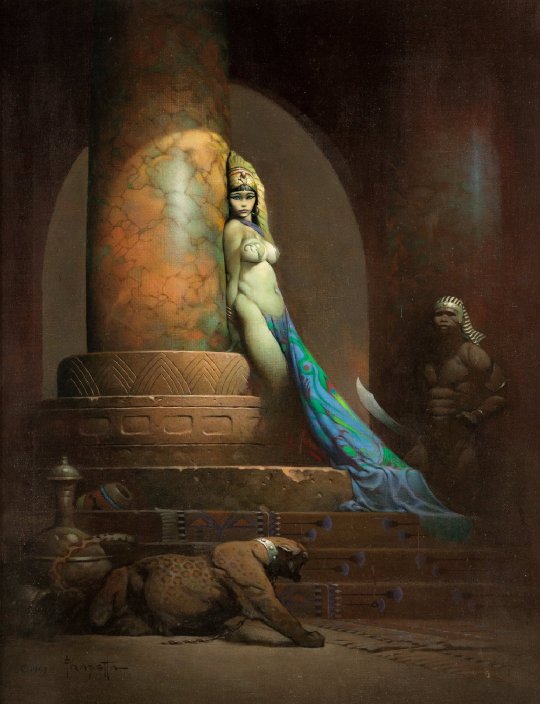
Frank Frazetta, Egyptian Queen
75 notes
·
View notes
Note
Nefretiti
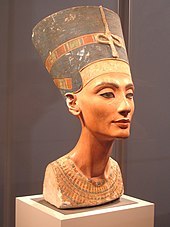
Neferneferuaten Nefertiti, or Nofretiti, (14th century BC; 18th dynasty, New Kingdom) is perhaps best well known for her bust, which has become world famous for its' uniqueness and craftsmanship. But Nefertiti played a role in one of the most controversial eras of Egyptian history. She is one of the most well-recorded Queens of ancient Egypt, but very little is known about her actual life besides conjecture.
Let's start with dissecting her name. Most people will divide her name up into the words Nefer and Titi; Nefer being a common word in ancient Egypt meaning beauty and goodness. In actuality, her name is divided up as neferet - iiti, more classically transliterated as Nfr.t-jy.tj. The t belongs to nefer as it is the denomination of a female pronoun in the ancient Egyptian language, and the jy.tj means coming or has come. All together, her name means The Beautiful One Has Come.
Nefertiti is indeed beautiful; she is, as mentioned earlier, one of the most depicted Queens of Egyptian history, with her image appearing on a great number of walls, in carvings and in paintings, and of course, statues. The reason for this is partly due to her marriage to the Heretic Pharaoh, Akhenaten. To understand this connection a little better, one must have some background about the Pharaoh Akhenaten.
Akhenaten and Nefertiti were married close to when Akhenaten was coronated, which was for him around the age of 16 or 18, and for Nefertiti was around the age of 12 to 16. Akhenaten is fairly well known Pharaoh. His controversial history has made sure of that, despite the fact that after he died, the following Pharaohs did everything in their power to rid Egypt of his memory by destroying his city and erasing all images of him. Akhenaten started off as Amenhotep IV––a name which connects him to the Egyptian God Amun, often associated with the sun, but representing hiddenness, and one of the highest and most powerful Gods of Egypt. The cult of Amun at the time of the New Kingdom was perhaps the most widespread cult of worship in Egypt, and the 18th dynasty, to which the Pharaoh Amenhotep IV belongs, is the first dynasty of the New Kingdom.
This was, apparently, unsatisfactory for the Pharaoh Amenhotep IV. Still, for the first 5 years of his reign, he followed Amun's cult, until he made a dramatic religious change to worship of the Aten; a new God that represented the sun disc. Aten was a faceless God, and the first mention of the word aten was in the Old Kingdom, and back then, it meant 'disc'. While Aten was worshipped as a mere aspect of Ra, the Sun God, in Amenhopte IV's father's (Amenhotep III) reign, Amenhotep IV decided that the Aten should be the primary deity worshipped. Amenhotep IV changed his name to Akhenaten, and worshipped the Aten above all else, as the nurturer of the world, the creator, and the giver of life. This would've likely been fine; however, Akhenaten decided that the Aten should be the only God worshipped, and banned the worship of all other Gods.
Ancient Egypt had been polytheistic since it's very earliest beginnings. Akhenaten essentially introduced monotheism out of nowhere and insisted all his subjects follow him in his new faith, outlawing all other worships, and forcing many priests to abandon the temples of other Gods. Additionally, ancient Egyptians were very accustomed to using an image to worship a God; the image usually being an animal, human, or an animal-headed human. But the Aten was a disc. Although the Aten had been worshipped in Amenhotep III's reign as a falcon-headed solar deity, Akhenaten insisted that the Aten be only shown as a disc with rays reaching out, with small hands on each ray.
Obviously, this caused a lot of dissent in Egypt and the following reigns.
Another interesting point of contention was the fashion in which the Aten interacted with the royal family. In the past, the Pharaoh was connected to the Gods more than any other human––he was the bridge between the two worlds, and the mediator between humanity and the Gods. This was, generally, not a task shared by the whole of the royal family. But in Atenism, the Aten would only shine its life-giving rays onto the Pharaoh and his royal wife; in this case, Akhenaten and Nefertiti. Thus the people, if they wanted to experience the life and love of the only, legally worshippable God, would have to go through the Pharaoh and his wife. This power would've likely, at least in part, been given to the royal family in order to cement their changes, and protect them from any backlash.
This massive change in culture and religion had great affects on ancient Egypt at the time. The style of ancient Egyptian art changed drastically, and the figures of the royal family were now represented as sinuous and gangly, often with large, sagging bellies and breasts, and curved, graceful facial features. Since Akhenaten and Nefertiti, as the royal family, were so important to this new religion of Atenism, the two of them were depicted in a number of scenes––many of them unique to the Amarna period, which is the name for the period in which Atenism was installed. These scenes were familial in nature; depicting the royal couple sitting with their children and bathing in Aten's life-light, throwing gifts down to the people, and engaging with one another. This is one of the main reasons that Nefertiti is the most widely-depicted Queen of Egypt. Not only is she depicted often as the wife of Akhenaten, but she is drawn in her own right––she makes offerings to the Aten on her own, and there are depictions of her smiting the enemies of Egypt, which is a role traditionally given solely to the Pharaoh.
Another piece of evidence for the high status of Nefertiti comes from this famous depiction of the royal Amarna family:

Here, Nefertiti sits on the right side, opposite her husband, Akhenaten. Akhenaten is holding up one of his children, and Nefertiti holds another two children; three of the six daughters that Nefertiti would bear for Akhenaten. The children are depicted in an almost grotesque, alien fashion, though it's not something you can really fault the artists for; it took a long time for artists across the world to realize that babies are not, in fact, just tiny humans, and that their proportions are different. Still, the style of the Amarna period is not helpful; with their large, oval heads, thin limbs, and sagging stomachs, it is difficult to imagine that anyone could be traditionally, Egyptian beautiful. Yet there is still a strange beauty to it; the sagging bellies are meant to call to mind Hapi, a God of great fertility, and the artist's ability to capture the facial features and emotions of their subject is amplified by this new and forgiving artstyle.
This image is a house altar. What that means is that people were encouraged, and evidentially did, worship the royal family in their homes, which is somewhat unprecedented. House altars were usually for Gods such as Tawaret and Bes, who were protectors of the household. But now, with traditional Egyptian religion banned, the typical house altar was now a shrine to Akhenaten and Nefertiti, and by extension, their children, which again shows the importance and power bestowed upon not just the Pharaoh, but his wife as well, as the two are represented in equal size.
Another interesting note about this particular house altar is the thrones on which Akhenaten and Nefertiti are seated. While Akhenaten's seat is mostly blank, Nefertiti is seated upon a throne reserved only for Pharaohs, the reason for this being the decorations which depict the Sema-Tawy ritual; the conjoining of the two lands.
Some time during the course of Akhenaten's reign, he decided to move the capital of Egypt to a deserted stretch of land along the Nile Valley, and called the new city Amarna, for which the period was named after. Here, the royal family took up residence, and this is where the cult center of the Aten would carry out its worship. This is also where Akhenaten royally screwed up his duties in foreign diplomacy, but that is a story for another day.
Before moving to Amarna, Nefertiti had three daughters in Thebes, the previous capital, and three more daughters in Amarna. In order, her daughter's names were Meritaten, Meketaten, and Ankhesenpaaten; then in Amarna, Neferneferuaten Tasherit, Neferneferure, and the youngest, Setepenre. It was to a lesser wife of Akhenaten's that the famous boy Pharaoh Tutankhamun was born, and originally, his name was Tutankhaten.
During his reign, when concerning Nefertiti, Akhenaten placed special attention upon her and loved her dearly, which is why she was one of the most powerful Queens of Egypt. Akhenaten described her as "possessed of charm" and "sweet of love", that "one is happy to hear her voice," and that "contents the Aten with her sweet voice". The two husband and wife were rarely depicted separately, and Akhenaten gave Nefertiti the title of 'heiress', although she was not the daughter of a King. Instead, what many scholars believe Akhenaten meant by this, was that she was to be his successor.
After Akhenaten's death, two Pharaohs ruled for a short time before Tutankhamun took over, and one of those Pharaohs is believed to have possibly been Nefertiti under the name of Neferneferuaten, which means beautiful is the beauty of the Aten. It is still debated whether this was in fact Nefertiti, but given that Nefertiti had given herself the name Neferneferuaten far before Akhenaten's death, and the elvated status gifted by her husband, it seems somewhat likely.
In essence, due to the circumstances of her life and her husband, Nefertiti was elevated to a status that never came before or after her life. Women in ancient Egypt were awarded the same rights as a man, but the wife of the Pharaoh was never depicted as equal to the Pharaoh in such a fashion, as being Pharaoh meant being the intermediary between the heavenly and the earthly, and was a special accorded honour. Nefertiti, perhaps due in part to her charisma and beauty, was given a position equal to the Pharaoh, which never happened unless it was a woman who was becoming Pharaoh. As controversial as Akhenaten's reign was, he did love his wife greatly.
I want to share my opinion on this subject a little, which is essentially to say, that I don't like Akhenaten and I don't try to hide it. His worship of the Aten is alright, but it is the banning of all other worship which rests very uneasily in me. That being said, there is a good source which goes more into detail about Nefertiti, and it is very pro-Akhenaten and anti-ancient Egyptian religion, instead glorifying the monotheism of Atenism and such. Still, it is a valuable resource; Nefertiti and Cleopatra: Queen-monarchs of Ancient Egypt, by Julia Samson, and can be found on Internet Archive here.
132 notes
·
View notes
Text
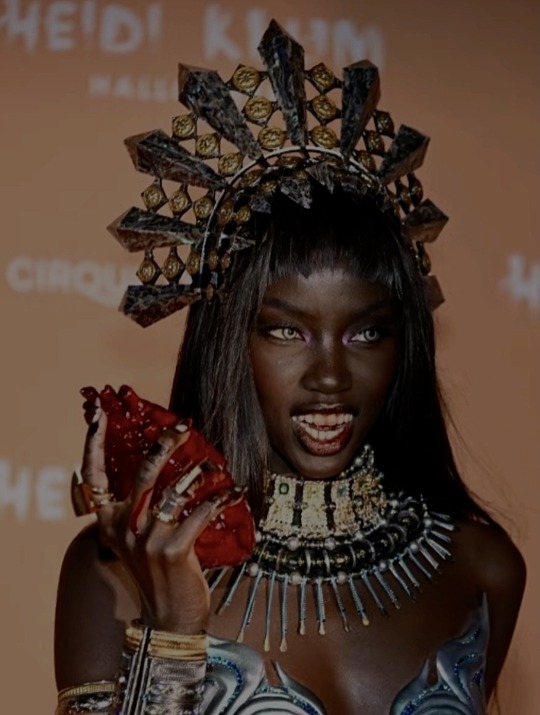
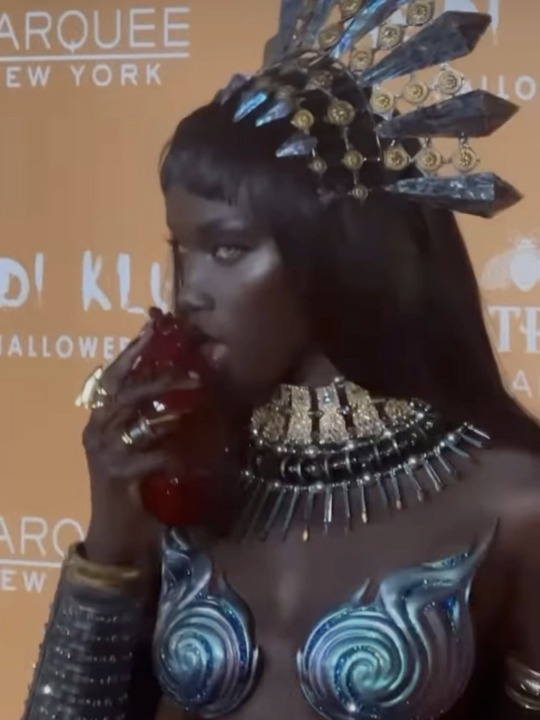
#succulentsiren#vampirecore#vampire#halloween#dark feminine energy#etc#anok yai#divine feminine#akasha#dark femininity#egyptian queen
88 notes
·
View notes
Text

The Hunt: Cleopatra’s Long-Lost Tomb
The Egyptian queen may rest in the ancient city of Alexandria, which now lies at the bottom of the Mediterranean.
She has one of the most captivating and enduring mythologies of any leader in history, yet the true end of Queen Cleopatra’s story remains an enigma. Archaeologists might be able to offer some clarity, if they could only find her final resting place.

The location of the Queen of the Nile’s tomb has eluded experts for centuries. Napoleon famously led an expedition searching for the crypt in the early 19th century. Egyptologists widely believe it is hidden somewhere in Alexandria, where the missing tombs of all 14 of the Ptolemaic Pharaohs, the final dynasty of ancient Egypt, are expected to be. Alas, much of ancient Alexandria now lies at the bottom of the Mediterranean Sea.
Greek historian Plutarch indicated that when Emperor Octavian ended a civil war by defeating Cleopatra and her beloved husband, the great Roman general Mark Antony, he allowed for them to be buried together. Though the prospect of finding both of their physical remains is thrilling, Plutarch wrote of their death and burial several decades after their occurrence, which casts his words into doubt.
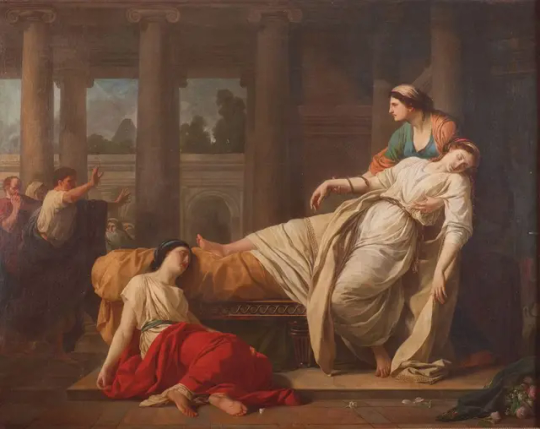
Many Egyptologists accept that both the Queen and her royal consort died dramatically by suicide, she by snakebite and he by his own sword. Others speculate that she died by intentional drug overdose, or by stinging herself with a poison-tipped hairpin. A growing number of experts suspect the suicide is a cover-up—that perhaps the queen was murdered. Much of the contemporary understanding of Cleopatra is based on the accounts of ancient Roman and Greek historians who undoubtedly held a bias towards her. An autopsy of her mummy might reveal different truths.
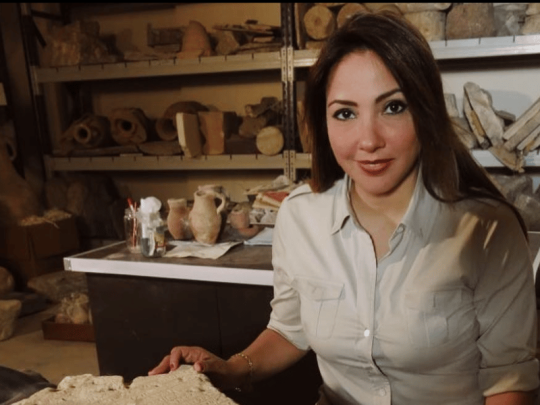
Dominican archaeologist Kathleen Martinez.
Today, the quest for Cleopatra VII Thea Philopator’s elusive burial place has been taken on primarily by Dominican archaeologist Kathleen Martinez, who has dedicated two decades of her life to this mission. Martinez subscribes to the snakebite ending. She believes the ancient queen’s suicide was a ceremonial act, part of a ritual apotheosis: shedding her mortal coil so as to ascend to the status of goddess. The ritual, Martinez theorizes, culminated in moving Cleopatra’s body from her palace to a temple 25 miles west of Alexandria, Taposiris Magna.



In 2022, Martinez announced the discovery of a tunnel running under the temple that she believes could have served as a corridor for delivering Cleopatra’s body. The tunnel is widely agreed to be an aqueduct, an exact replica of a similar structure found in Greece.
After working with Martinez for 11 years at Taposiris Magna, Zahi Hawass, former Minister of State for Antiquities Affairs of Egypt, now categorically disagrees with her. For one, it would be incredibly anomalous for a pharaoh to be interred at a temple. Furthermore, he asserts that there is “no evidence at all” to indicate that Cleopatra, ancient Egypt’s last pharaoh, is buried there.
“I believe now that Cleopatra was buried in her tomb that she built next to her palace and it is under the water,” Hawass lamented. “Her tomb will never be found.”
By Adnan Qiblawi.
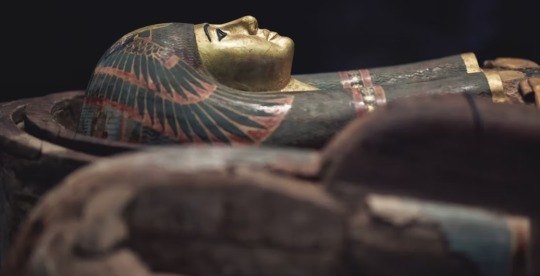
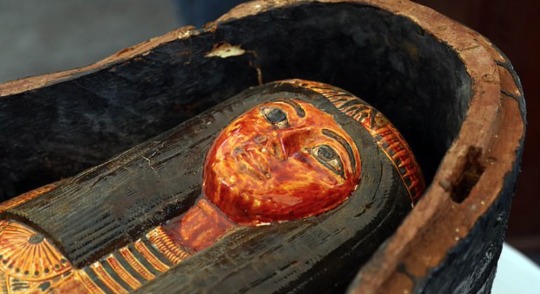
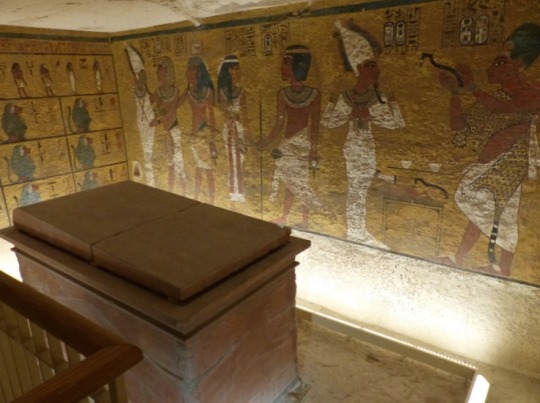
#The Hunt: Cleopatra’s Long-Lost Tomb#Queen Cleopatra#Egyptian Queen#Mark Antony#Taposiris Magna#ancient city of Alexandria#Kathleen Martinez#ancient grave#ancient tomb#ancient artifacts#archeology#archeolgst#history#history news#ancient history#ancient culture#ancient civilizations#ancient egypt#egyptian history#egyptian pharaoh
43 notes
·
View notes
Text
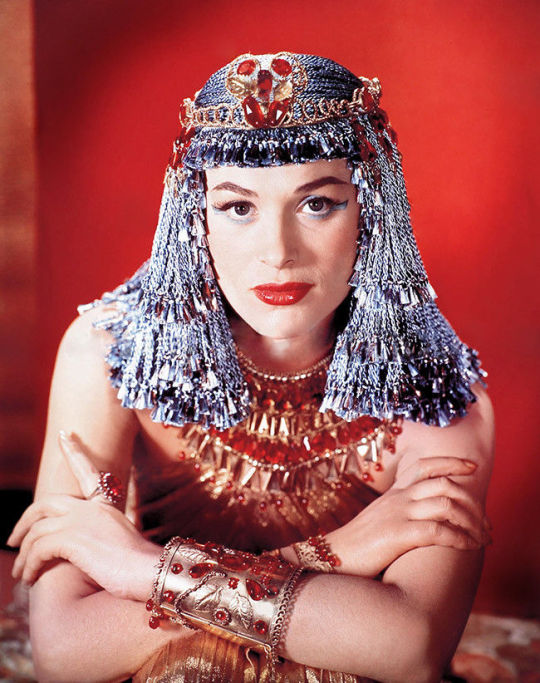
Born on this day: ill-fated Polish starlet Bella Darvi (née Bajla Węgier, 23 October 1928 - 11 September 1971), one of the many protégées (more accurately, mistresses) that 20th Century Fox magnate Darryl Zanuck unsuccessfully groomed for stardom in the fifties. (As Kenneth Anger leers in Hollywood Babylon II (1984), “Of all Hollywood’s “piggy” moguls, Zanuck was the biggest casting couch hog”). After discovering Darvi in Paris in June 1951 and importing her to Hollywood, Zanuck launched the publicity build-up: “A newly arrived French doll by the name of Bella Darvi, who has the voice of Marlene Dietrich, the eyes of Simone Simon and the allure of Corinne Calvet, is hitting Hollywood with the impact of TNT. She’s got zip, zoom and zowie and in parlez-vous she is ravissante, chi-chi and très élégante.” Unfortunately, movie audiences were underwhelmed by Darvi’s performances in Hell and High Water (1954) and Biblical epic The Egyptian (1954, pictured) and she ignominiously returned to Paris. Her messy later years were blighted by gambling addiction (according to Wikipedia “In 1956, she reportedly lost $1,000 in two minutes at the casino then $65,000 in two days … Zanuck was still paying off her debts as late as 1970. She would win and lose up to £30,000 a night”) and Darvi died of suicide aged 42 in Monte Carlo in 1971.
#bella darvi#the egyptian#biblical epic#egyptian queen#kitsch#exotica#kenneth anger#hollywood babylon ii#lobotomy room#hollywood scandals#hollywood tragedy#doomed#old hollywood#classic hollywood#golden age hollywood#doomed beauty
16 notes
·
View notes
Text

Nefertiti Bust
1345 B.C.E. by the sculptor Thutmose, attributed, found in his workshop in Amarna, Egypt.
#nefertiti#ancient art#ancient egypt#egyptian art#ancient history#egyptian queen#ancient people#antiquities#artifacts#ancient artifacts#aesthetic#sculpture#beauty#art history#aesthetictumblr#tumblraesthetic#tumblrpic#tumblrpictures#tumblr art#tumblrstyle#artists on tumblr
77 notes
·
View notes
Text
From Sand Sculpture Festival, Egypt. Akhenaten and Nefertiti.
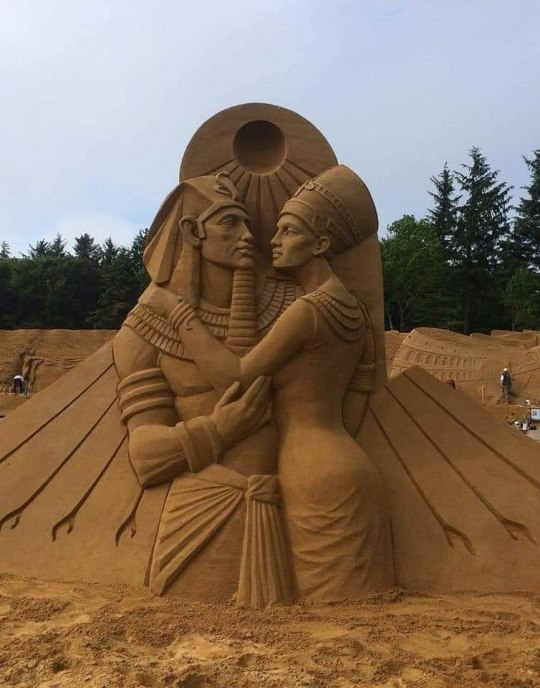
#akhenaten#nefertiti#egyptian art#egyptian#art#egyptian artist#sculpture#egypt#sand sculpture#sand sculpture festival#love#festival#modern sculpture#modern#egyptian queen#egyptian king
9 notes
·
View notes
Text


the dirty ass uggs…
7 notes
·
View notes
Text

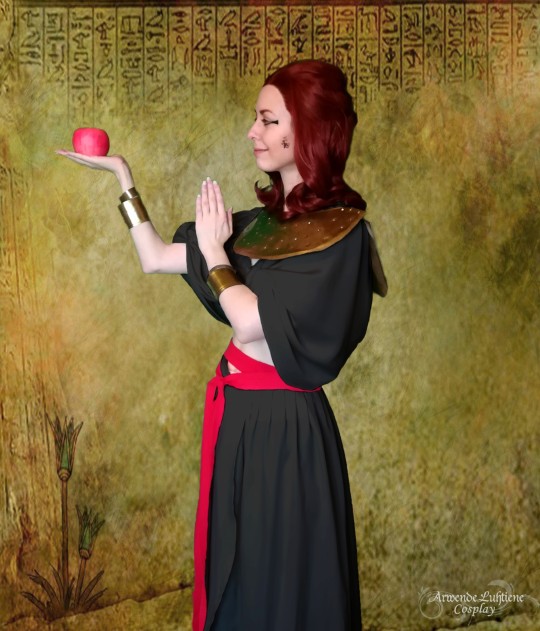
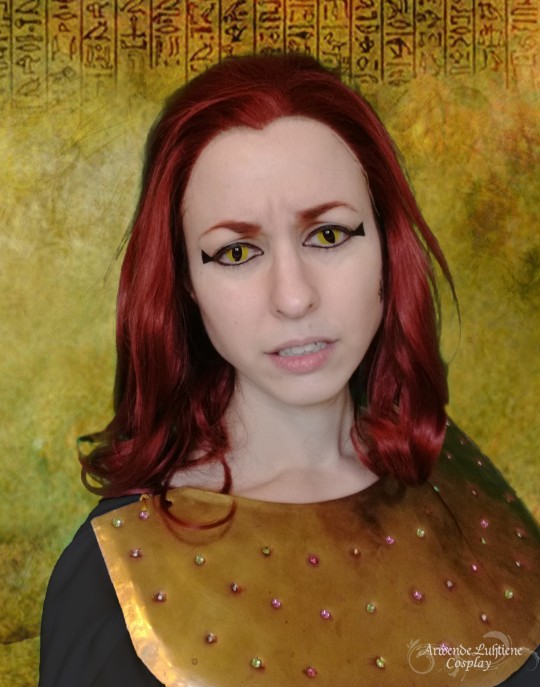

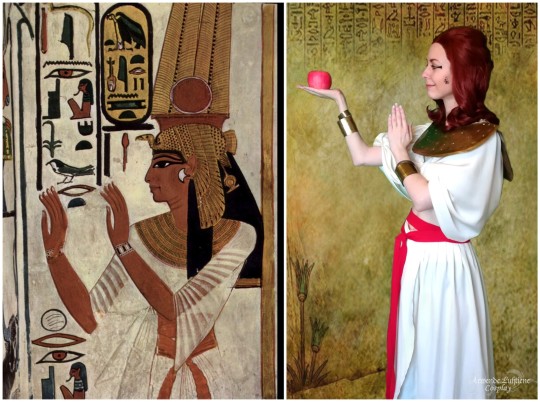



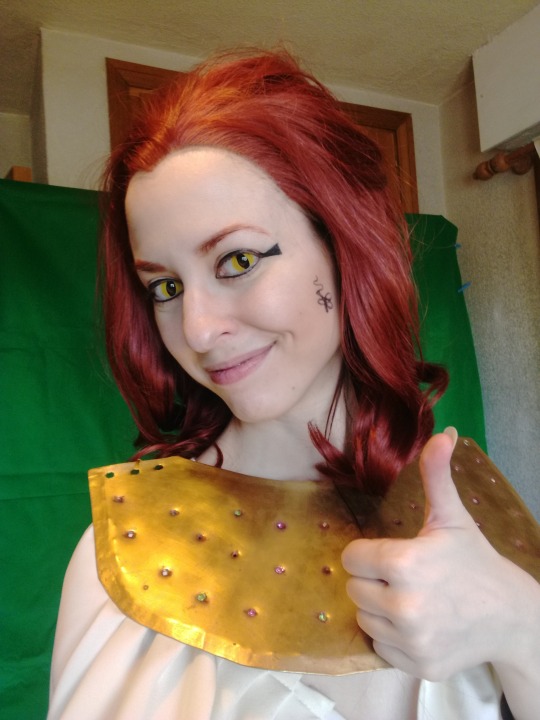
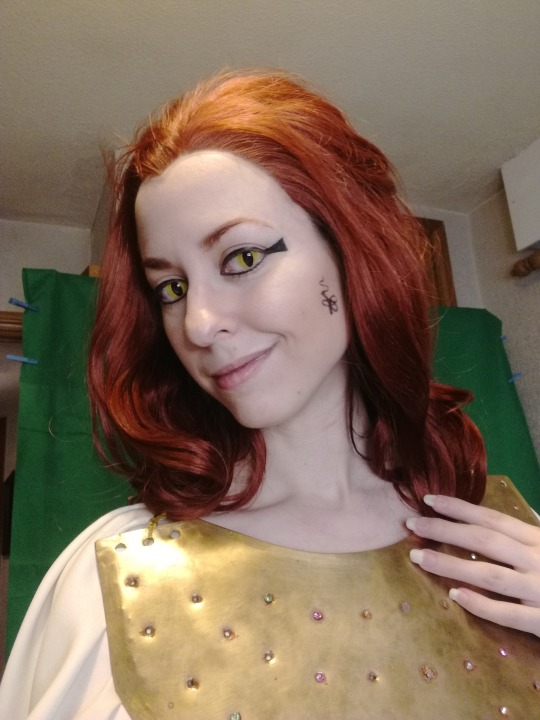
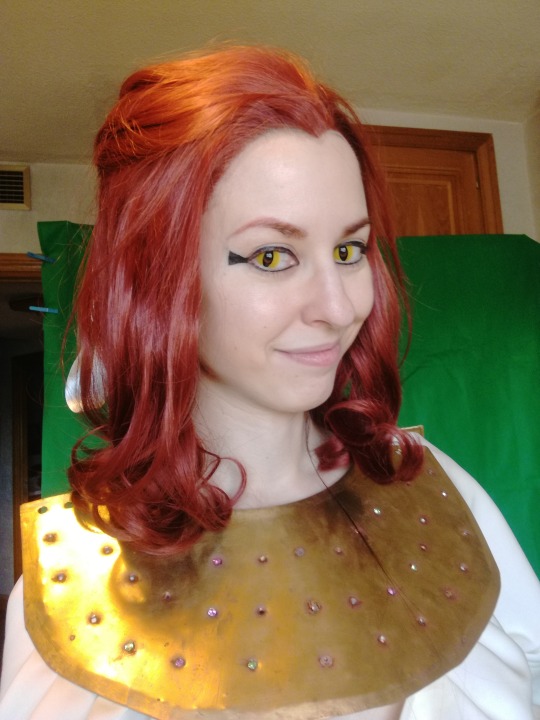
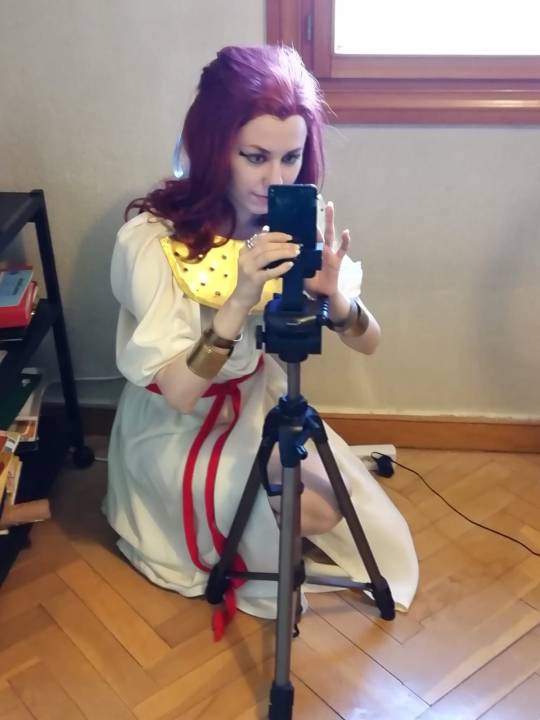
"I've missed you so much, Angel" 🍎🥺 My Egyptian Crowley variation, inspired by @whiteleyfoster 's fantastic fancomic The Omens of Egypt (formerly Prince of Omens) 🍎🐍 . You never know when a childhood reenactment of an Egyptian Queen (Nefertari was my main inspiration for this costume) is gonna come in handy, and fortunately it mostly fits and looks quite similar to the second outfit that Egyptian Crowley wears in the comic 😁 I photoshopped the white into black, obviously xD I left the belt in red rather than gold, though, I think it contrasts quite well with the black and the red of the hair.
My Crowley cosplay posts
DeviantArt
Facebook cosplay page
Cosplay Instagram
@neil-gaiman @goodomensonprime
#good omens#crowley#good omens cosplay#crowley cosplay#whiteley foster#prince of omens#omens of egypt#historical reenactment#egyptian crowley#ancient egypt#My cosplays#nefertari#ancient egypt fashion#crowley good omens#good omens crowley#ineffable husbands#ineffable partners#good omens cosplayer#david tennant#crawley#crowley the demon#demon cosplay#good omens prime#egyptian queen#egyptian reenactment#prince of omens cosplay#omens of egypt cosplay
26 notes
·
View notes
Text
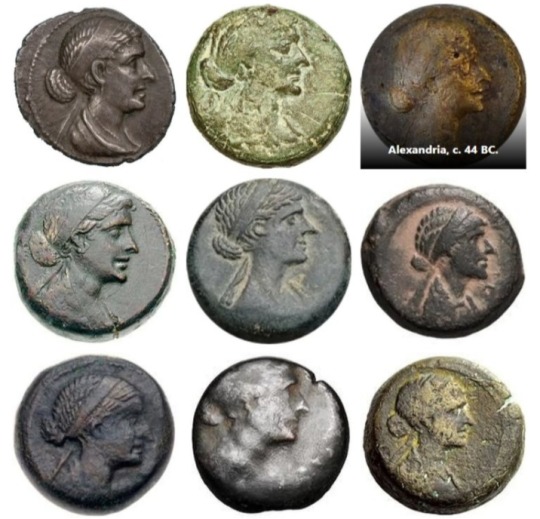

The Berlin Cleopatra, a Roman sculpture of Cleopatra wearing a royal diadem, mid-1st century BC, now in the Altes Museum, Germany
—
The Enigma of Cleopatra: Modern Reconstructions and the Quest for Her True Appearance
If one thing is clear from various accounts and reconstructions of Cleopatra, it's that her allure went far beyond her physical appearance.
Cleopatra VII (70/69 BC – 10 August 30 BC), the last queen of Egypt, has been a character of fascination and intrigue for centuries.
Known for her intelligence, charm and political acumen, she was a woman who made a significant mark in a world dominated by men.
She was fluent in multiple languages, well-versed in politics, and an astute diplomat — traits that made her a formidable leader.
However, the question of her physical appearance, specifically her beauty, has always been a topic of debate.
Her true power lay in her intellect, her charm, and her political acumen.
Cleopatra’s ability to captivate and influence others was central to her rule.
She managed to form alliances with two of the most powerful Romans of the time — Julius Caesar and Mark Antony, which were crucial for the maintenance of her power in Egypt.
These alliances and the relationships she forged speak volumes about her charisma and ability to persuade.
One of most enduring portrayals of Cleopatra is that of a woman of unparalleled beauty.
This is a narrative that has been perpetuated by countless plays, movies and novels, most notably William Shakespeare's Antony and Cleopatra.
However, the historical texts present a somewhat different picture.
Plutarch (c. AD 46 – after AD 119), a Greek biographer and essayist, made the earliest surviving description of Cleopatra in his work "Parallel Lives."
Interestingly, he doesn't dwell on her physical appearance but emphasizes her charismatic persona and intellectual prowess.
He notes that "her actual beauty, it is said, was not in itself so remarkable, but the attraction of her person and the character that attended all she said or did were something bewitching."
Cassius Dio (c. 165 – c. 23), another Roman historian, also focused more on Cleopatra's persuasive abilities and personal charm than her physical attractiveness.
These descriptions suggest that Cleopatra’s allure was not based solely, or even primarily, on her looks.
In contrast to the romanticized portrayals of Cleopatra, the extant artistic depictions and coinage of her profile provide a more realistic, albeit stylized, representation of her appearance.
Coins minted during Cleopatra's reign depict her with a prominent nose, a strong chin, and deep-set eyes.
Some historians believe that these coins were a deliberate political statement, indicating Cleopatra's desire to be seen as equal to her male counterparts.
Similarly, the few surviving statues and carvings of Cleopatra from the ancient world do not present an image of classical beauty.
The Berlin Cleopatra, a painted limestone statue from 1st century BC, shows her with a hooked nose and a stern expression.
© The Archaeologist
#Cleopatra#Berlin Cleopatra#Cleopatra VII#egyptian queen#ancient egypt#classical beauty#intelligence#charm#political acumen#Julius Caesar#Mark Antony#ancient rome#roman empire#egypt#Antony and Cleopatra#William Shakespeare#Plutarch#Cassius Dio#coins#Altes Museum#Germany
14 notes
·
View notes
Text

#culture#egypt#egyptian#ancient egypt#egyptian culture#nefertari#nefertari meritmut#queen#africa#queen of egypt#egyptian queen
41 notes
·
View notes
Text


Ptolemaic Queen, perhaps Cleopatra VII, Ptolemaic Period, Egypt, c. 200–30 B.C. Met Museum. 89.2.660
43 notes
·
View notes
Text

Princess Sitamun sister of Akhenaten and Aunt if Tutankhamun
#egyptian art#egyptian#egypt#egyptology#egyptphotography#african history#kemet#ancient egypt#egyptshots#prince of egypt#ancient history#egyptian queen#black queen
21 notes
·
View notes
Text

Embracing the elegance of ancient Egypt! 🌟✨ Channeling the beauty and mystique of a timeless era. Who else loves a touch of history in their style? #EgyptianVibes #TimelessBeauty #CostumeGoals
#egyptian#egyptian art#egyptian queen#timeless beauty#costume jewelry#costume makeup#digital arwork#digital art
5 notes
·
View notes
Text

Egyptian, Head of Akhenaten or Nefertiti, New Kingdom, Amara Period, ca. 1353-1336 B.C.
#ancient egyptian art#egyptian art#egyptian history#egyptian aesthetic#egyptian king#egyptian queen#ancient art#ancient people#ancient culture#aesthetic#beauty#ancient statue#art history#aesthetictumblr#tumblraesthetic#tumblrpic#tumblrpictures#tumblr art#tumblrstyle#artists on tumblr#egyptian#egypt
25 notes
·
View notes